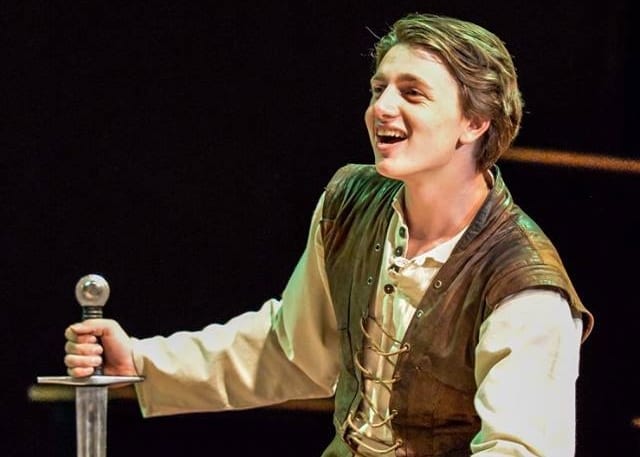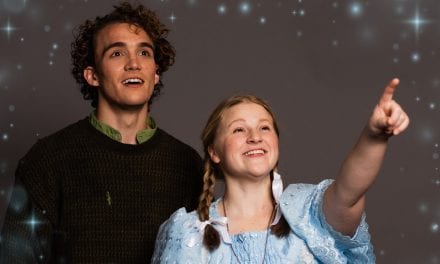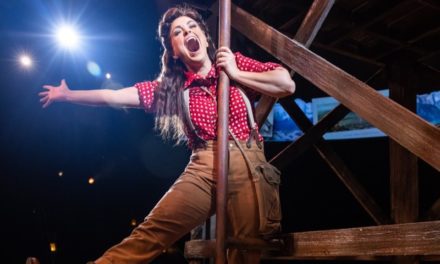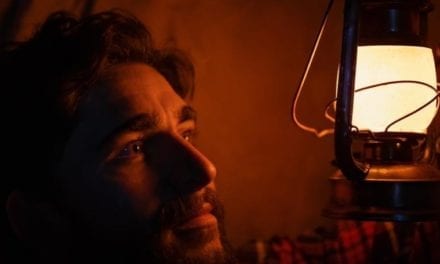SOUTH SALT LAKE — Theatre is the most collaborative art; even the most basic shows require the creative input from several people. That is why it is remarkable when a production works. The contribution of just one designer, performer, or technical artist can sometimes make the difference in the success of a production. This was apparent in the Utah Children’s Theatre production of Henry V: despite the impressive efforts of some of the artists involved, essential aspects of this production fell short, and the play never crystalized into the show that it had the potential to be.

Show closes October 1, 2016.
One of Shakespeare’s history plays, Henry V chronicles the early reign and military triumph of the play’s eponymous king. The Utah Children Theatre creative staff chose to combine this play with the two previous plays in the Henriad series: Henry IV Part 1 and Henry IV Part 2. The result is a rapid tour of the rise and conquest of this English hero.
Starting the play is Brooke Wilkins as the narrator. Wilkins delivers some of the lines that Shakespeare wrote for the chorus in Henry V, but also some exposition in modern language (with a playwright uncredited). Wilkins has boundless energy, and it is easy with her guidance to imagine “a kingdom for a stage” or “the vasty fields of France.” Her enthusiastic delivery, coupled with an audience of children, made the modern language work better than most interpolations into Shakespeare’s script.
Another strong performance was created by Spencer Hohl as Hotspur. Hohl had the most naturalistic acting style in the play, and the result was that Hotspur was a believable, sympathetic character. Hohl’s performance culminated in Hotspur’s death, which was moving and realistic enough to be one of the most memorable moments of the play. In addition to playing Hotspur, Hohl also served as the play’s fight choreographer, and the fight scenes were the most exciting aspect of the production. If anything, I found myself wishing that the Battle of Agincourt had lasted longer.

Cameron Ballard as Prince Hal.
Conversely, Cameron Ballard as Prince Hal (who later grows up to be Henry V) was subdued in his performance, and the play suffered as a result. Ballard had little range in his line delivery, which made important moments, like the St. Crispin’s Day speech, less emotional than they needed to be. Ballard also spoke for most of the play in a higher register voice that sounded too gentle and weak to work for a rough-and-tumble guy who grows up to be a military leader. This lessened the impact of the tennis ball scene or Henry V’s faceoff with Hotspur. I doubt that this is Ballard’s ordinary voice because in the Utah Children’s Theatre production of The Taming of the Shrew he spoke in a lower voice that seemed more natural. I believe that Ballard made this artistic choice with the approval of the director, Matthew Windham, because the actor who played King Henry IV (Ricky Parkinson) spoke in the same style. The result was a pair of performances that weakened the two most important characters in the Henriad.
Generally, I believe that the reason that the play failed to live up to its potential is Windham’s directing. Most of the scenes felt stagnant, and supporting actors just stood around purposelessly whenever they weren’t speaking. Indeed, few of the supporting actors seemed to have developed characters, and it was a challenge to believe that they were criminals, soldiers, or nobility. Instead of a rich tapestry of medieval English society, Windham made his secondary actors into a featureless mass of people saying their next line in order to move the story along. Some character work and additional stage business could have done much to improve this production.

Brooke Wilkins as the narrator.
One asset of this production was the costumes, designed by James Parker and Christina Wilson. The tunics that served as the soldiers’ uniforms were simple, but they conveyed important information about which characters were on each side in the battles. I also appreciated the more ornate costumes worn by Henry IV and Henry V, which quietly showed their important status as leaders of the other characters. The civilian costumes were also enjoyable, with boots, doublets, and tunics that will be memorable for both children and adults in the audience.
In sum, Henry V had the ingredients of a great production, and audience members will certainly see things that they like in the play. But the components were not combined properly to create a superb final product.





